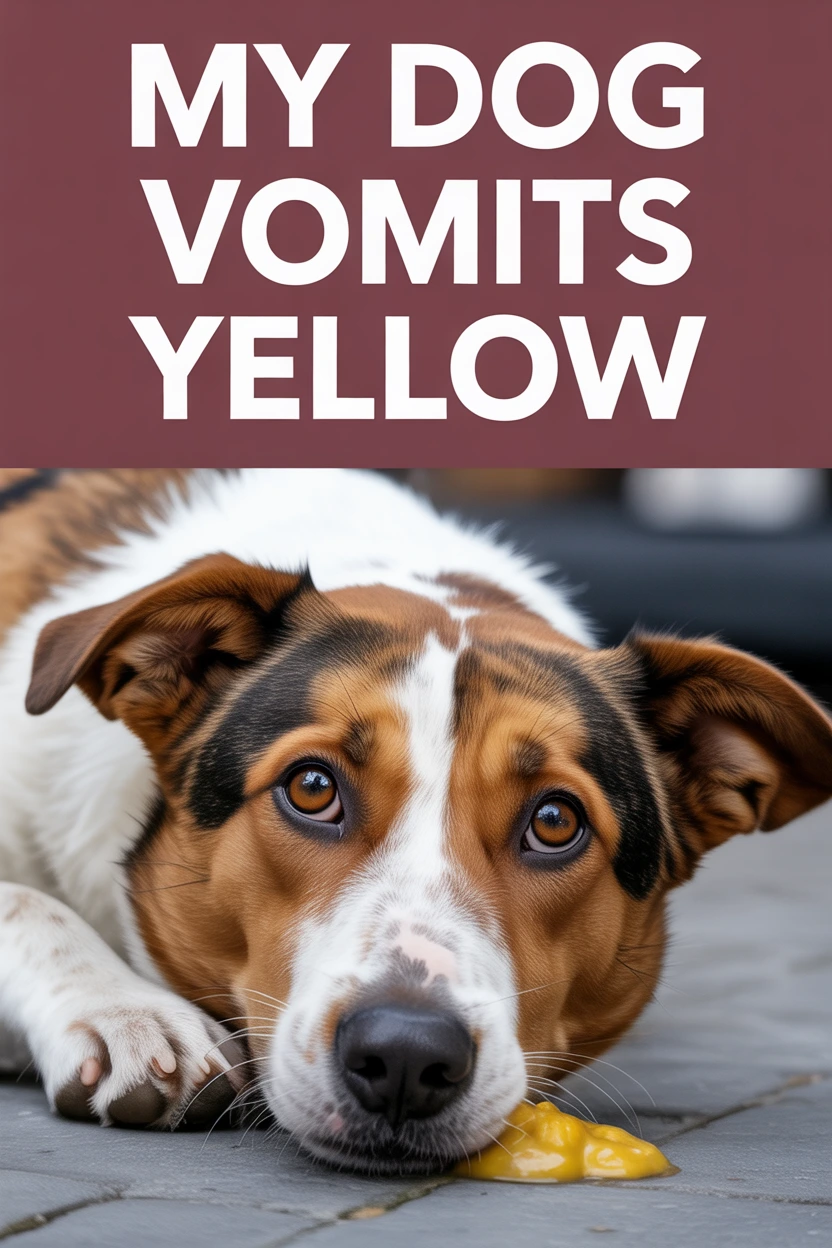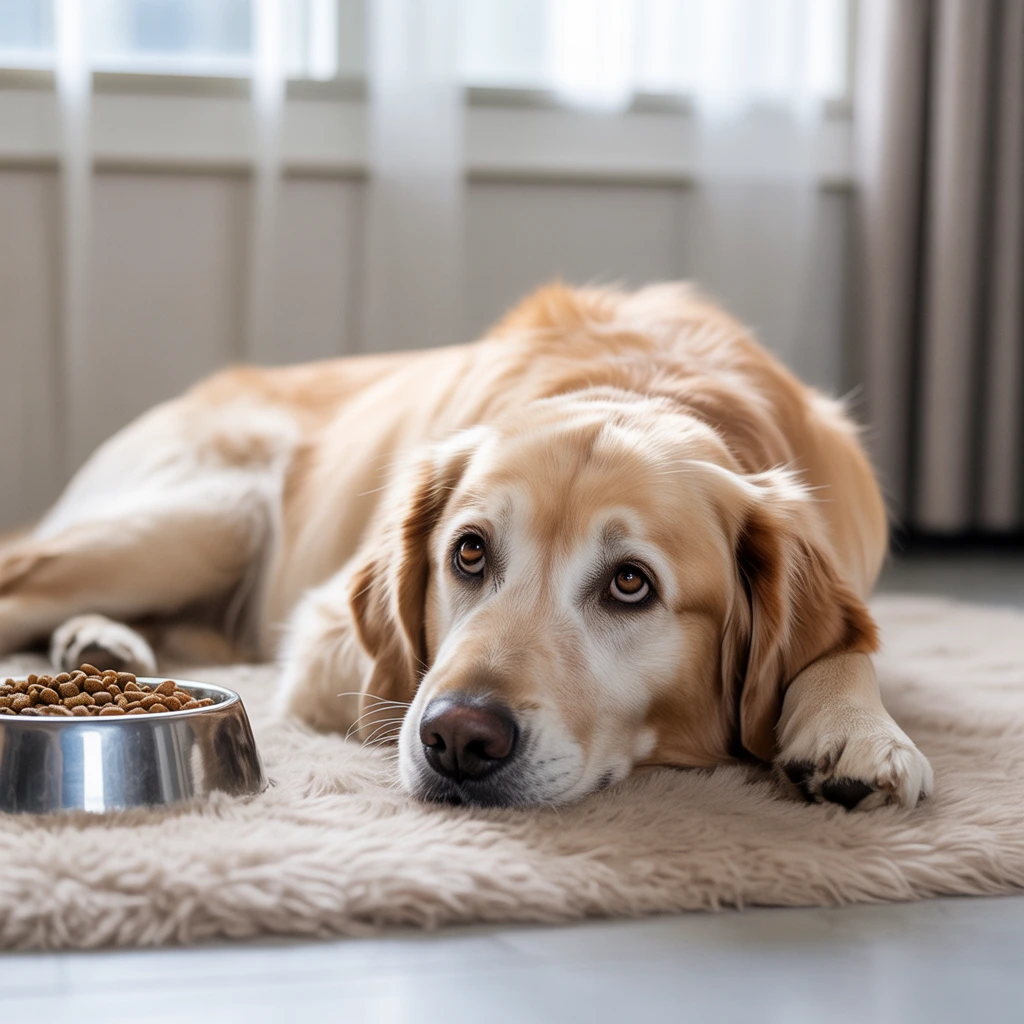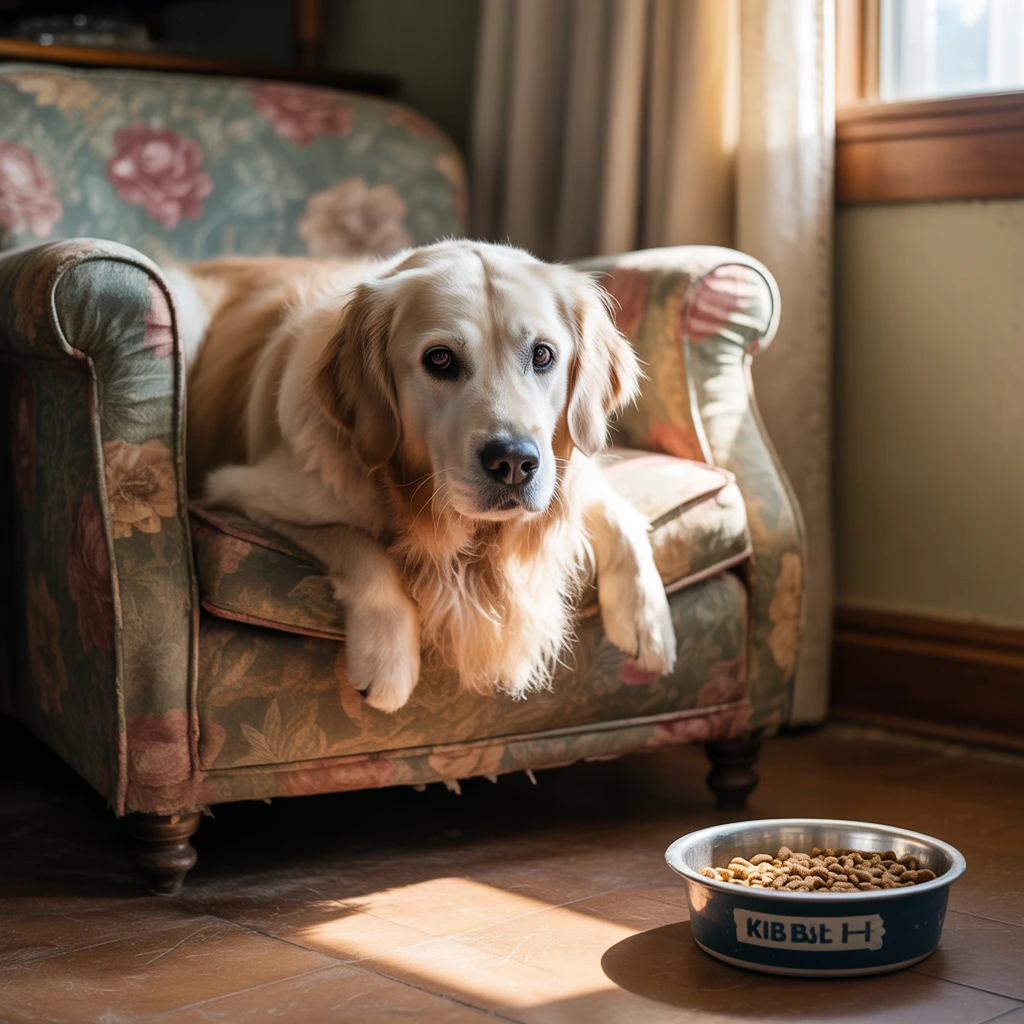Dog Vomits Yellow: Causes, Concerns, and When to See a Vet

There’s nothing that tugs at a dog owner’s heart quite like seeing their beloved pup sick. If your dog vomits yellow, it can be alarming — the color alone can make you panic. I’ve been there too, watching my own dog’s tail drop after an episode of yellow vomit, wondering what it means and how to help.
While occasional yellow vomit can be harmless, it can also signal an underlying issue that needs attention. Let’s break down the reasons behind it, what you can do at home, and when it’s time to call the vet.
1. What It Means When a Dog Vomits Yellow
The yellow color usually comes from bile — a digestive fluid produced by the liver and stored in the gallbladder. Bile helps break down food in the intestines, but when your dog’s stomach is empty, it can irritate the stomach lining and cause vomiting.
This often happens:
- Early in the morning before breakfast
- After long gaps between meals
- When a dog skips a meal or doesn’t eat enough

2. Common Causes of Yellow Vomit in Dogs
While bile is the most common explanation, other factors can cause your dog to vomit yellow. Understanding these helps you respond appropriately.
Empty Stomach
When a dog goes too long without eating, bile can build up and cause stomach irritation. This is especially common in the morning.
Diet Changes
Switching food suddenly can upset your dog’s digestive system, leading to yellow vomit.
Indigestion or Stomach Irritation
Eating grass, spoiled food, or foreign objects can cause mild stomach upset.
Acid Reflux
Dogs can get acid reflux just like humans, and bile vomiting can be a symptom.
Underlying Health Issues
Pancreatitis, liver disease, or intestinal blockages can also cause yellow vomit and require urgent veterinary care.

3. When to Worry and Call the Vet
Most cases of yellow vomit are mild and resolve quickly. But you should seek veterinary attention if:
- Vomiting happens frequently or lasts more than 24 hours
- There’s blood in the vomit
- Your dog also has diarrhea, lethargy, or loss of appetite
- The vomit is accompanied by weight loss or other unusual symptoms
Persistent vomiting could indicate something serious that needs immediate treatment.
4. What You Can Do at Home
If your dog vomits yellow occasionally but is otherwise healthy, a few changes can help:
- Feed Smaller, More Frequent Meals: This prevents the stomach from staying empty for too long.
- Adjust Meal Times: Give a small snack before bedtime or early in the morning.
- Avoid Table Scraps: Human food can trigger digestive upset.
- Provide Fresh Water: Always keep your dog hydrated.
If the vomiting continues despite these adjustments, it’s best to consult a vet.
5. Preventing Yellow Vomit in the Future
Prevention starts with a healthy, consistent routine:
- Stick to a regular feeding schedule.
- Transition to new foods gradually over 7–10 days.
- Monitor your dog’s behavior and note any triggers for vomiting.
- Keep harmful foods and objects out of reach.
Consistency in diet and care can make a big difference in your dog’s digestive health.

Final Thoughts
Seeing your dog vomit yellow can be worrying, but in many cases, it’s a simple issue like bile from an empty stomach. With love, observation, and a little routine adjustment, you can help your furry friend feel better fast.
However, your instincts as a dog parent are powerful — if something feels “off,” it’s always safer to check with your vet. A healthy, happy dog is worth every bit of care and attention.






